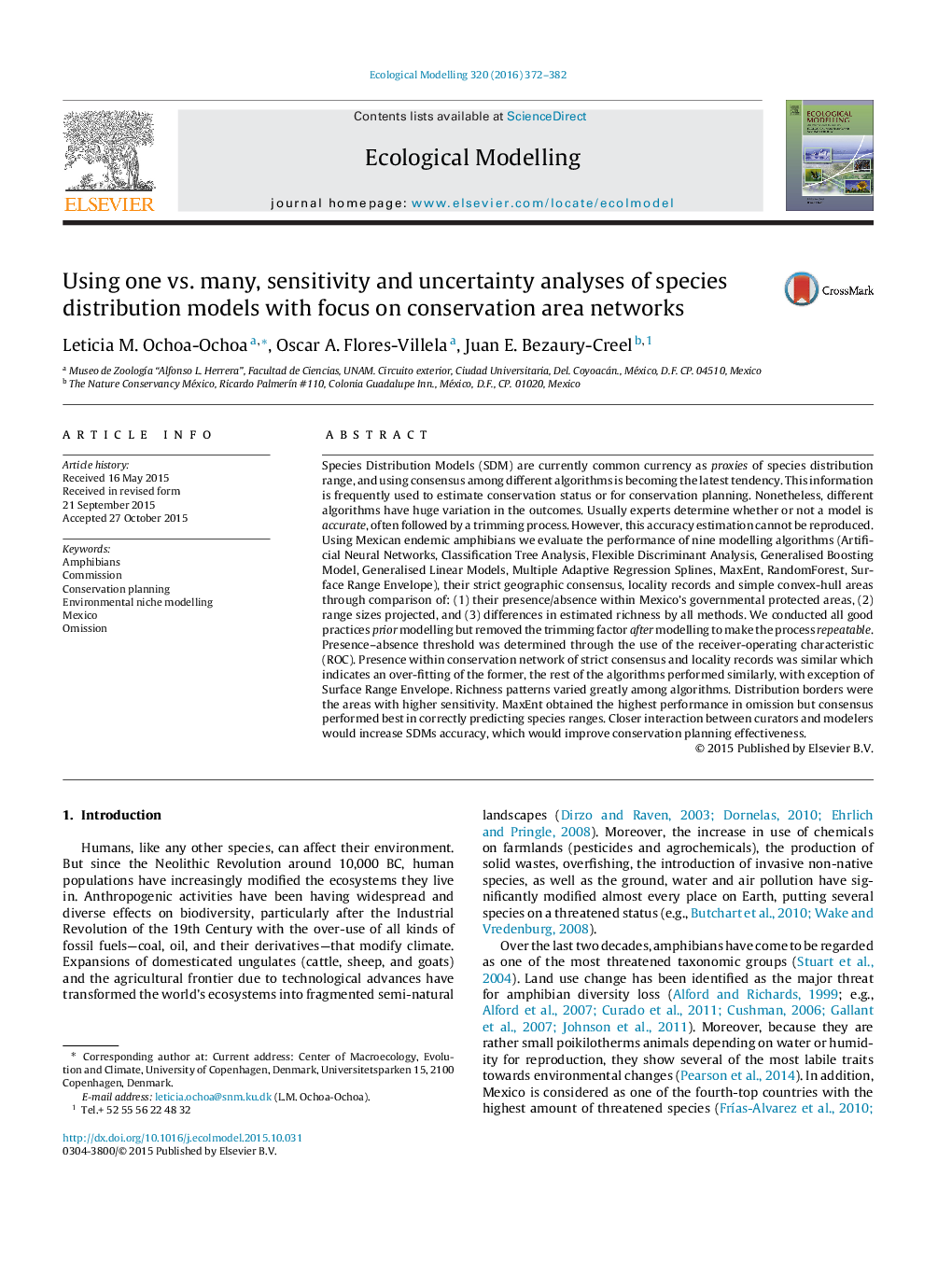| Article ID | Journal | Published Year | Pages | File Type |
|---|---|---|---|---|
| 6296299 | Ecological Modelling | 2016 | 11 Pages |
Abstract
Species Distribution Models (SDM) are currently common currency as proxies of species distribution range, and using consensus among different algorithms is becoming the latest tendency. This information is frequently used to estimate conservation status or for conservation planning. Nonetheless, different algorithms have huge variation in the outcomes. Usually experts determine whether or not a model is accurate, often followed by a trimming process. However, this accuracy estimation cannot be reproduced. Using Mexican endemic amphibians we evaluate the performance of nine modelling algorithms (Artificial Neural Networks, Classification Tree Analysis, Flexible Discriminant Analysis, Generalised Boosting Model, Generalised Linear Models, Multiple Adaptive Regression Splines, MaxEnt, RandomForest, Surface Range Envelope), their strict geographic consensus, locality records and simple convex-hull areas through comparison of: (1) their presence/absence within Mexico's governmental protected areas, (2) range sizes projected, and (3) differences in estimated richness by all methods. We conducted all good practices prior modelling but removed the trimming factor after modelling to make the process repeatable. Presence-absence threshold was determined through the use of the receiver-operating characteristic (ROC). Presence within conservation network of strict consensus and locality records was similar which indicates an over-fitting of the former, the rest of the algorithms performed similarly, with exception of Surface Range Envelope. Richness patterns varied greatly among algorithms. Distribution borders were the areas with higher sensitivity. MaxEnt obtained the highest performance in omission but consensus performed best in correctly predicting species ranges. Closer interaction between curators and modelers would increase SDMs accuracy, which would improve conservation planning effectiveness.
Related Topics
Life Sciences
Agricultural and Biological Sciences
Ecology, Evolution, Behavior and Systematics
Authors
Leticia M. Ochoa-Ochoa, Oscar A. Flores-Villela, Juan E. Bezaury-Creel,
